Centria Bulletin (ISSN 2489-3714) is a continuously published online publication of Centria University of Applied Sciences.
Read this guide carefully before writing a publication
Centria Bulletin – publication schedule 2025
| Last possible day to send material | To be published at latest |
| 15.9. | 31.10. |
| 14.11. | 19.12. |
Who can write to the Bulletin?
A member of Centria UAS staff can write for the Bulletin.
A student trainee (not even in a paid traineeship) or a member of another research or educational organisation can be a co-author of an article.
Trainees cannot be the first author of the article or be entirely responsible for the content; the responsibility for the text is always taken by a Centria expert.
Topics
The online magazine publishes expert articles written by staff, related to Centria’s teaching, research and development work, the author’s job or professional field. The articles must be (1) new and (2) produce new information and (3) have not been published elsewhere before (not even parts of them). All the articles will be checked for plagiarism (using your own texts is also plagiarism). Articles can be in Finnish, Swedish or English.
Accepted articles include
- Topics about work on projects
- Topics on work in the field of teaching
- Other professional work
- Incorporating new things into work
- Presentation of innovations produced by Centria
- If in doubt about the suitability of your topic, contact the editor before you start writing!
Not accepted e.g.
- Travel reports
- Book reviews
- Technology reviews, including descriptions of solutions or presentations seen at trade fairs
- Service descriptions
- Project plans
- Topics similar to the ones mentioned above
Stumbling blocks
Law and regulations
Centria UAS, as a public institution, is subject to obligations that we all must comply with:
Accessibility
All published material must be readable by screen readers.
Images: each image in the article must have a verbal explanation (alt text) of what the image contains, e.g. ”The person in the picture is reading a storybook to children.” This is different from a caption, e.g. ”Figure 1. Children need verbal stimulation to develop. Photo by Cecilia Centrialainen 2023.”
Diagrams and figures: diagrams and figures generated in Word cannot be entered directly into WordPress, but must be saved as images and submitted separately to the editorial team. Please remember to include the above mentioned descriptive text in these as well!
Table: If a table is submitted as an image, remember to include a descriptive text that includes the entire content of the table!
The text must be clear and understandable: so forget the jargon!
Copyright and good scientific practices
- Copyright: no images, tables or illustrations may be taken from the internet without the permission of the owner of the images. It is not enough to cite the source of the image. If you obtain permission from the owner of the image, the reference to the image should be marked ”with the permission of the owner” in addition to the source. In general, it is easiest to produce the material yourself.
- If you want an illustration for an article, you can browse Adobe Stock and provide the editor with the # tag of the image you want.
- All texts are checked by the editorial staff using a plagiarism checker. Respect the text written by the others: direct quotes are always marked with quotation marks and appropriate citations.
- Re-using your own text is also plagiarism. Always rephrase things, including the project descriptions and your own earlier text.
Artificial intelligence
- The use of artificial intelligence is recommended, for example, when checking the language.
- The text of the article should always be produced by the author, and if for any reason AI is used to produce a part of the text, it should be mentioned in the text.
- Please remember that it is very difficult to check the accuracy (= truthfulness) of AI-generated text and the editorial staff does not have the resources to do so. So only publish text on which you can put your own reputation as a writer on the line. You cannot add AI as an author.
References and bibliography
Reference
If the reference is to the whole paragraph, the reference is placed at the end of the paragraph. (Centrialainen 2024.)
If the reference is to a single sentence, it is placed before the full stop of the sentence (Centrialainen 2024).
For specific cases of citation, see here:https://libguides.centria.fi/c.php?g=702216&p=5048575
Bibliography
- Book: author’s surname, first letter of first name. Year of publication. Title of the work. Edition (if different from the first, is marked as in the book). Place of publication: Publisher.
Steger, U. 2009. Sustainability partnerships: The manager’s handbook. Basingstoke; New York: Palgarve Macmillan.
- E-book: author’s surname, first letter of first name. Year of publication. Title of the work. Edition (if different from the first, is marked as in the book). Place of publication: Publisher. Available at: permanent address. Accessed: dd Month yyyy.
Hopkins, B. 2009. Cultural Differences and Improving Performance: How Values and Beliefs Influence Organizational Performance. Available at: https://ebookcentral-proquest-com.ezproxy.centria.fi/lib/cop-ebooks/detail.action?docID=4513085. Accessed 15 January 2024.
- Article: last name of the author, first letter of the first name. Year of publication. Title of the article. Name of the journal. Volume or year (number) page numbers of the whole article.
Leppisaari, I., Kleimola, R., Herrington, J., Maunula, M. & Hohenthal, T. 2014. Developing More Authentic e-Courses by Integrating Working Life Mentoring and Social Media. Journal of Interactive Learning Research, 25(2), 211–236.
In the case of an electronic article, the permanent address, the DOI, and the access date are added at the end of the reference.
Cantele, S. & Zardini, A. 2018. Is sustainability a competitive advantage for small businesses? An empirical analysis of possible mediators in the sustainability–financial performance relationship. Journal of cleaner production, 182, 166–176. Available at: https://doi-org.ezproxy.centria.fi/10.1016/j.jclepro.2018.02.016. Accessed 15 January 2024.
- Report and brochure: Author’s surname, first letter of first name. Year of publication. Title of the work. Place of publication: Publisher. Series and serial number (Note: The year need not be repeated unless it is included in the serial numbering.)
Hakulinen-Viitanen, T., Hietanen-Peltola, M., Bloigu, A. & Pelkonen, M. 2014. Äitiys- ja lastenneuvolatoiminta sekä kouluterveydenhuolto: valtakunnallinen seuranta 2012. Helsinki: Terveyden ja hyvinvoinnin laitos. Report 12/2014.
In the case of an electronic report or brochure, the permanent address and access date are also added at the end of the reference.
Leppisaari, I., Ihanainen, P., Nevgi, A., Taskila, V-M., Tuominen, T. & Saari, S. 2008. Hyvässä kasvussa – Yhdessä kehittäen kohti ammattikorkeakoulujen laadukasta verkko-opetusta. Helsinki: Korkeakoulujen arviointineuvosto. Korkeakoulujen arviointineuvoston julkaisuja 4: 2008. Available at: https://karvi.fi/app/uploads/2015/01/KKA_408.pdf. Accessed 19 January 2024.
- Website: The page owner or company. Year. Title. Available at: address. Accessed: dd Month yyyy.
World Economic Forum. 2020. Here’s how technology has changed the world since 2000. Available at: https://www.weforum.org/agenda/2020/11/heres-how-technology-has-changed-and-changed-us-over-the-past-20-years/. Accessed 19 January 2024.
or
Here’s how technology has changed the world since 2000. 2020. World Economic Forum. Available at: https://www.weforum.org/agenda/2020/11/heres-how-technology-has-changed-and-changed-us-over-the-past-20-years/. Accessed 19 January 2024.
- Laws and regulations: The name of the law or regulation. The date/number of the regulation. The work or address where the law is available.
Ammattikorkeakoululaki. 14.11.2014/932. Available at: http://www.finlex.fi/fi/laki/ajantasa/2014/20140932. Accessed 19 January 2024.
REMEMBER THE ACCESS DATE!
Other instructions for the list of bibliography: https://libguides.centria.fi/c.php?g=702216&p=5048576
It is also possible to use Mendeley for automizing the citations. Guide for Mendeley here.
Remember!
- Treat publication in the Centria Bulletin in the same way you would submit a camera-ready paper to a journal or conference.
- From 2 to 5 A4-pages with line spacing 1,5 is good enough! Articles longer than this tend to be to heavy for reader.
- Check the language, e.g. using AI or other tools.
- Build references and bibliography carefully.
- Make sure you have not plagiarised or used copyrighted material without permission.
- Include images as separate files with the article and include captions, alt-texts, keywords (use words defined in finto.fi), financier information (if applicable) and author information.
- If the publication is incomplete, it will be returned to the author several times if necessary, in which case the promised publication date cannot be guaranteed.
Remember also that if you are a prolific author, you can sometimes choose a platform other than Bulletin as the platform for your publication. Professional magazines, for example, often welcome articles from experts. This variation strengthens both your credibility as an expert and the Bulletin’s credibility as a publishing channel.
Texts will be sent to the editors as a word file using the webropol form.

